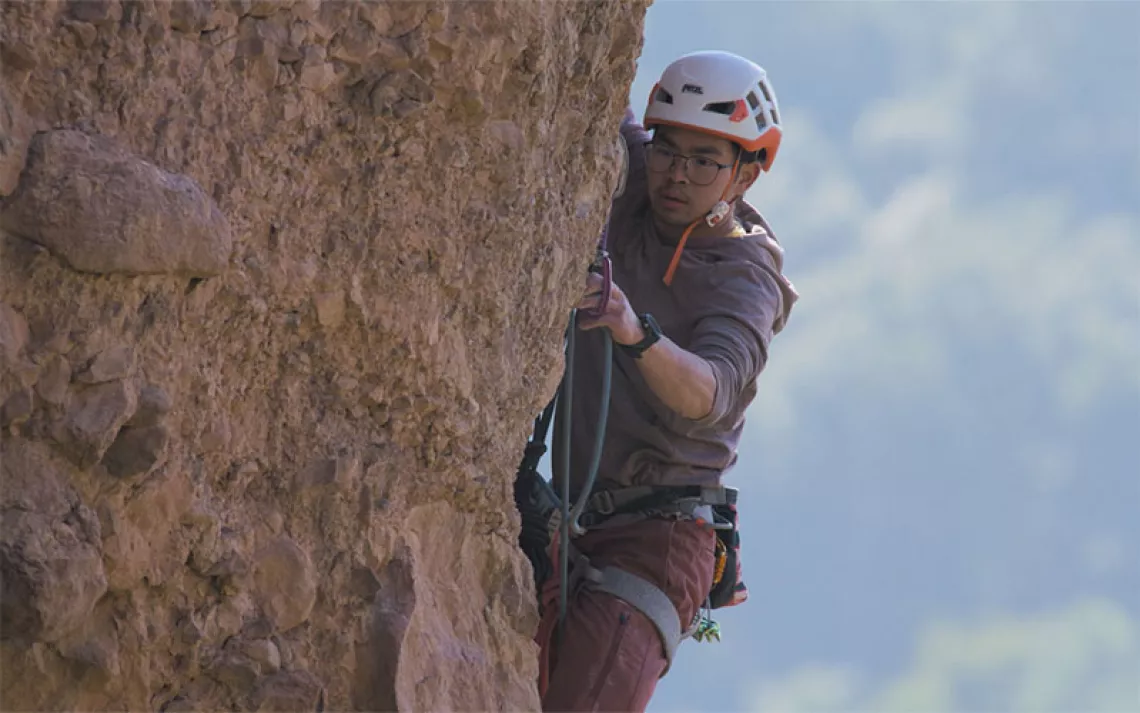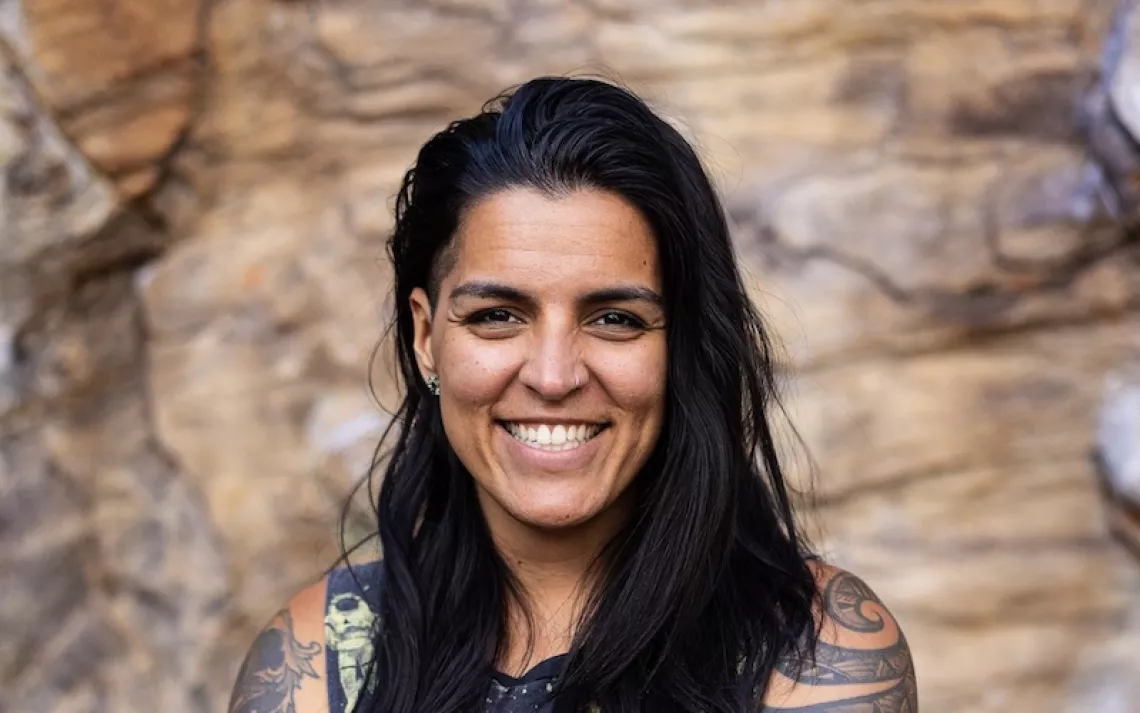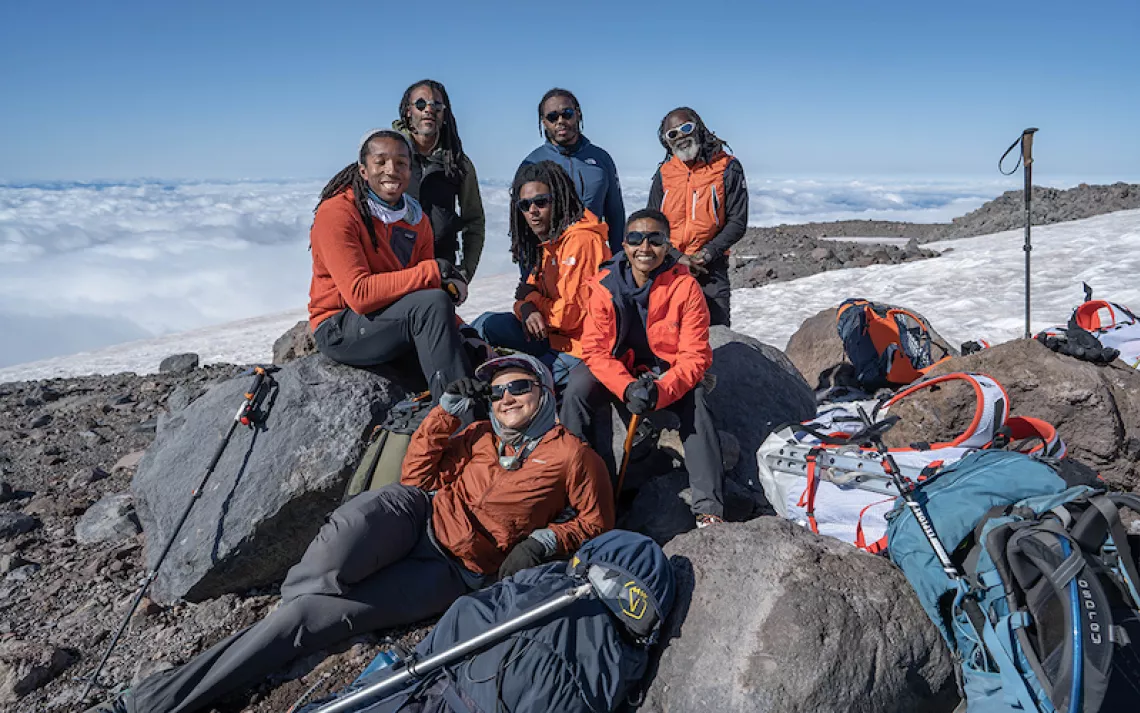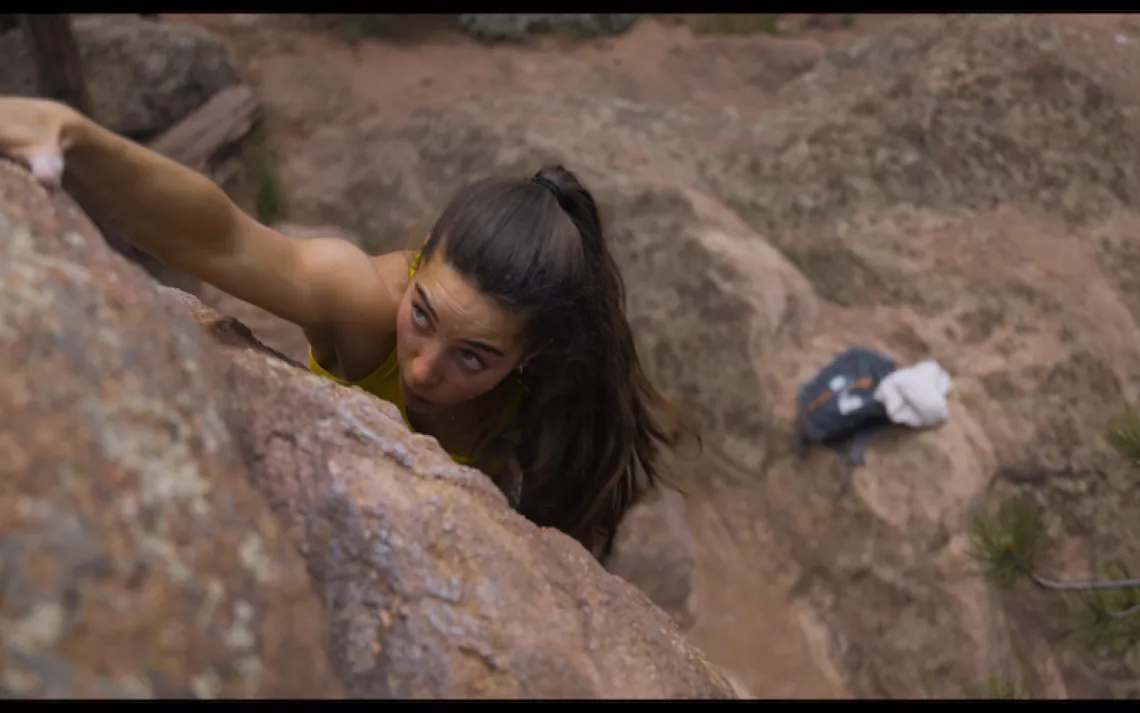New Routes, First Ascents Captured in the Faces of “The Climbers”
Jim Herrington’s new folio celebrates iconic mountaineers of the 20th century
All photos copyright of Jim Herrington. Photos courtesy of Mountaineer Books, from The Climbers, by Jim Herrington.


Like most of my climbing friends, in my early years I always carried a camera into the mountains. But Kodachrome II was pricey. I recall taking only 10 or 12 rolls along on 40-day expeditions in Alaska. If I shot eight pix on a single day, it felt like an extravagance.
And of course, I reserved my snaps for action shots of the scariest climbing, or portraits of the peaks in all their savage glory. The idea of wasting frames on close-ups of my teammates never occurred to me. And anyway, after a few days of tent-bound storms, I was sick to death of staring at their ugly mugs over the cook stove.
The results, with few exceptions, were butt shots of leaders who looked to be crawling up gentle ramps. As for the peaks themselves—no 35mm photo could do justice to them as Brad Washburn or Vittorio Sella had.
How I wish now that I had taken the trouble to capture portraits of those long-ago comrades! How I wish I had a single good picture of Don Jensen, who climbed with me all over the West and on three expeditions in the Alaska Range, and who died at the age of 30.
Not all of us were such benighted lensmen. During Yosemite’s Golden Age, the epoch celebrated in Steve Roper’s Camp 4, Tom Frost managed to shoot photos in the midst of cutting-edge climbs that brilliantly humanized such partners as Royal Robbins and Yvon Chouinard. And Glen Denny set aside his own ambitions to capture the Camp 4 scene in all its homely splendor.
Jim Herrington’s wonderful new folio volume of portraits, titled simply The Climbers, aims at a loftier plateau. For one thing, it is international in scope, and though Herrington seeks to crystallize his own Golden Age—defined by him as “those who were vertically active between the 1920s and 1970s”—he tries not only to document the visages of his heroes in their older years, but also to plumb those faces for keys to the character beneath. It is as if Richard Avedon had photographed mountaineers rather than movie stars, minus the props and gimmicks.
Thus the great cover photo of Washburn really does embody the man’s adamantine will and self-confidence. The image of Joe Brown reaching into his anorak pocket breathes reclusive toughness. Tom Hornbein grinning behind his Everest oxygen mask signals a playfulness that epitomized that pioneer’s boldest deeds. Conversely, Cesare Maestri seems to hide behind his raised coffee cup, as if fending off yet another exposé of his preposterous claim to have made the first ascent of Cerro Torre.
The birthdates of Herrington’s subjects range across nearly two generations, from 1909 (the magisterial Ricardo Cassin, photographed a week before he died at age 100) to 1953 (the gifted upstarts John Long and Henry Barber). The book does not pretend to compile an all-star roster; Herrington’s camera was necessarily constrained by his travel budget and by the availability of his subjects. But if stalwarts such as Armando Aste and Dinko Bertoncelj are less familiar to American readers than Fred Beckey and Layton Kor, we can chalk up some of that disparity to stateside provincialism about the climbing world. An excellent appendix by Topher Donahue supplies capsule bios of the principals.
Whether or not one agrees with Herrington’s rationale for ignoring younger climbers, that “by the '80s, the glamour was gone; the remarkable had become commonplace,” we should salute his decision to confine his portfolio to the ancients. Someone once said, “After 40 you get the face you deserve.” If that mordant judgment applies to climbers, the portraits in this collection bear it out in spades—what comes across again and again in the faces is a fierce belief in the rightness of going against the social grain to devote one’s best days to the “useless” pursuit of new routes and first ascents. One may quibble with some of the parameters of Herrington’s roundup—only four women among the 60 subjects?—but every photograph captures some idiosyncratic spark of the person limned in black and white.
All too often, the text conjoined with a photo album serves only as filler or padding. But Greg Child’s 30,000-word essay stands apart, amounting to a stirring apologia for the life of the mountains. Child outlines a history of some of the great deeds performed by the climbers on whom Herrington focuses, retelling the stories of famous triumphs and tragedies such as the French ascent of Annapurna in 1950 and the doomed American assault on K2 in 1953. These tales, one suspects, were the folklore that inspired a young Aussie cutting his eye teeth on Arapiles and the Blue Mountains. For some readers, these stories may be over-familiar, but as one chats with the younger generations, one learns with dismay that the Homeric fables of one’s formative years have become today’s forgotten texts.
Best of all in Child’s essay are the anecdotes he tells of personal encounters with the heroes in this book—for a surprisingly large segment of them crossed paths with Greg on their ways into the great ranges. Worth the price of the book alone are Child’s accounts of how a rotund Kurt Diemberger, in a tent deep in the wilds of the Karakoram, asked Greg to trim his toenails for him; how in the Bar National in Chamonix, Child first heard the tale of Walter Bonatti’s epic on the Freney Pillar of Mount Blanc; how at a slideshow in Sydney, “Hot Henry” Barber laughed and scolded Child about the youthful catastrophe that had broken his leg when his belay anchor pulled; how a phone call from Doug Scott brought Child the news of Alex MacIntyre’s death by falling stone on Annapurna.
And Child reminds us that whatever its glories, mountaineering exacts its ruthless toll, in the lives cut short by accidents. As he ticks off a list of climbers who died too young, Child muses, “It isn’t necessary to have known the climber who is not coming home. Having been a fellow traveler is enough to feel the lack.”
Pondering the portraits, we can ignore the wrinkles and gray hair. Evoking the vanished dead, Child offers a remark that could stand as an epigraph to this magnificent book: “In what photos we have of them . . . they are forever young.”
*

Glen Dawson. Pasadena, California, 1998.

Bradford Wasburn. Boston, Massachussetts, 2002.

Royal Robbins. Modesto, California, 2000.

Junko Tabei. Tokyo, Japan, 2016.

David Brower. Berkeley, California, 2000.
 The Magazine of The Sierra Club
The Magazine of The Sierra Club



